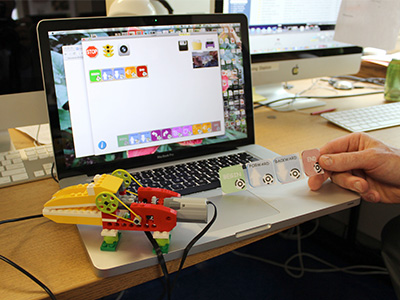“Encouraging Creativity and Experiential Learning”
Grant approved: October 2013
A $35,000 grant will renew support of Fox Meadow’s pilot project and initiate MakerSpace programs in the other four elementary schools in 2013-14. The budget includes $7,500 each in four new schools and $5,000 to improve Fox Meadow’s existing program.
MakerSpace’s goal is to prepare students to embrace innovation and entrepreneurial enterprise. The MakerSpace Program encourages experiential learning, communication, creativity, collaboration and critical thinking. Creating a dedicated physical space and engaging teachers, students and parents have been important elements in the success of the program in its first year at Fox Meadow. Student projects have included work on robotics, circuitry and use of a 3D printer.
Background
The pilot program in Fox Meadow was funded by the Center for Innovation in December 2012. Construction and equipment purchase took place in January and February 2013, with a ‘soft launch’ in March. The program is housed in a large closet – renovated with new flooring, freshly painted walls and added shelving to create a welcoming environment for students in grades 2 through 5. In its first three months of full operation, the program has proven to be popular with students and teachers alike.
Fox Meadow’s MakerSpace was developed by Peter McKenna and Principal Duncan Wilson, with active participation by many other teachers in the school. Activities in the 2012-13 school year initially involved third graders undertaking pilot activities in small groups working on prototype projects. Then second grade classes joined the program, along with fourth and fifth graders doing modeling activities with the 3D printer.



